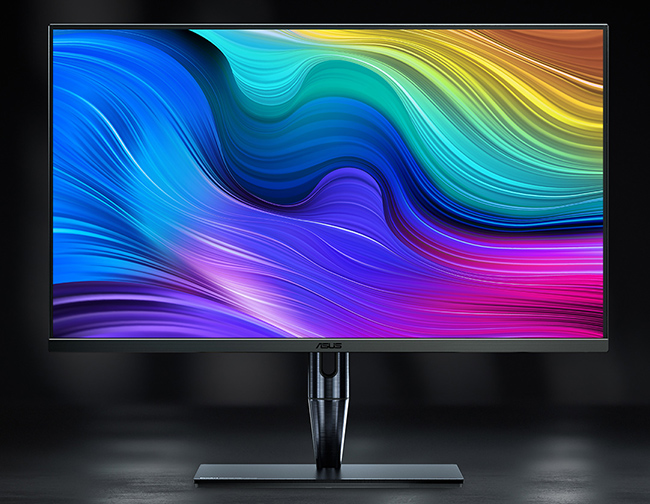
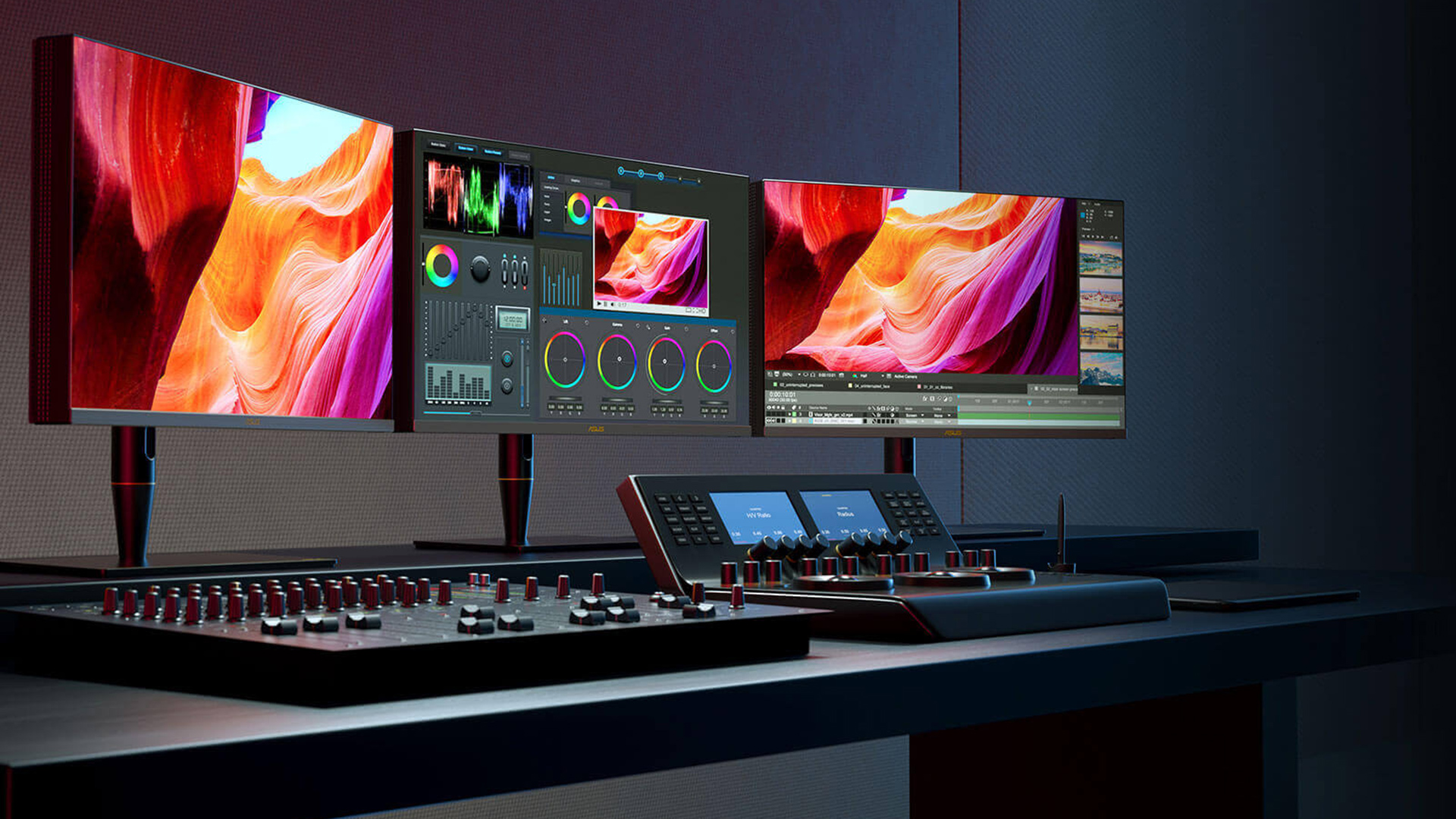
The range of monitors now available from Asus are superbly suited to video and television production.
When we went to Berlin earlier this year to look at Asus’s new range of workstations, laptops and monitors, it had already become clear that company was making a pretty concerted push for the content creation market with its ProArt range. The intent is visible not only from the spec sheets, but also from the industrial design and the way the it is being promoted. The displays, in particular, represent a lot of R&D; the number of companies on the planet who have ever engineered a thousand-plus-zone HDR backlight is still not large.
Probably we shouldn’t be surprised that Asus went to IBC as well, with no less than four monitors to show, all of which have something to attract film and TV people.
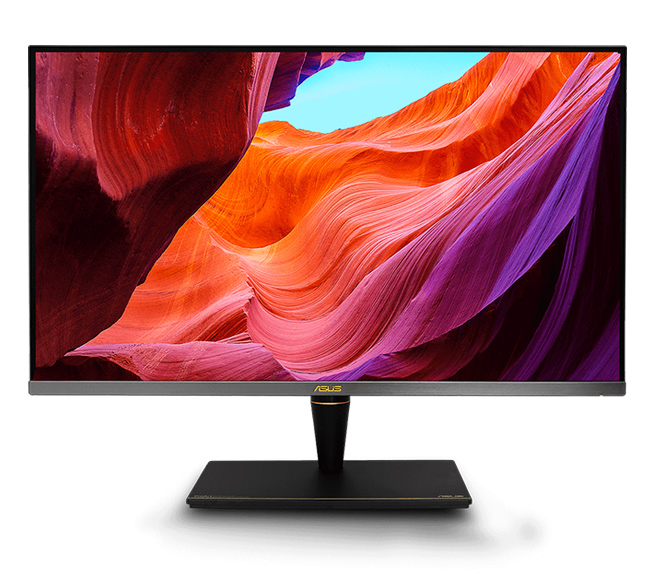
The Asus ProArt PA32UCX
The PA32UCX that we saw before] is still arguably the flagship of the range, with its 1152 zone backlight and support for Dolby Vision. That is, of course, an a lot less zones than there are pixels, but it works out to around a 45 by 25 grid, which is a lot more than a number of very, very expensive high end products sold by other people as reference displays. Asus tell us that PA32UCX displays will all be supplied with a delta-E of less than one out of the box, which is tricky to do and an indicatin of the confidence Asus has it its ability to manufacture these things accurately.
The PA32UCX is advertised as having 89% coverage of Rec. 2020, based, presumably, on the application of the quantum dot technology we discussed back in 2014. Decent coverage of 2020 makes fully- or almost-fully comprehensive coverage of more or less any other colour gamut fairly easy, and the display covers 99% of DCI-P3, 99.5% of Adobe RGB and, as we’d hope, all of sRGB. It also supports the core HDR formats, and while it likely won’t quite make the grade as a Dolby Vision mastering display, it can certainly display the format as well as HDR10 and HLG. For anything less than thousand-nit reference grading, in short, a plausible chance of actually being a reasonable display that won’t cost more than a nice car.
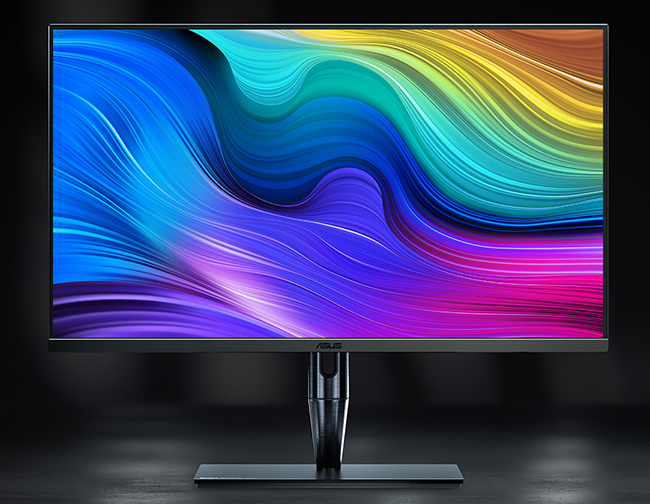
The Ausus ProArt PA32UCG
32-inch displays really shine at 3840 by 2160, and as such it’s fitting that Asus has chosen to create a second – the PA32UCG, with a similar 1152-zone backlight but the addition of Adaptive-Sync variable refresh rate that it. The idea of this feature is that it will display frames not at a fixed rate, but whenever they become available from the graphics card. There’s no solution to a graphics card that can’t render frames fast enough (and Asus makes some big, powerful graphics cards to solve those problems, too) but the idea is to avoid visible jitter and errors in rendered motion blur that can occur when a graphics card can’t quite keep up with a display.
The company seems interested in selling Adaptive-Sync to the game creation market, but of course the controllable frame rate has application in film and TV too. The PA32UCG is specified to achieve a constant 1,000 nits, peaking at 1,1600, a little brighter than the PA32UCX. The PA32UCG is described as “pre-certified” for VESA’s Display HDR 1400 standard.
If we’ve a little less desk space, ponder the PA27UCX. As the name suggests, it’s a 27” display and as such has a lower-resolution 576 zone backlight, but retains 3840 by 2160 resolution and similar colourspace coverage as well as 1000-nit brightness. All of the panels discussed so far, including the PA32UCX, PA32UCG and PA27UCX enjoy full 10-bit image processing and inbuilt colour calibration hardware.
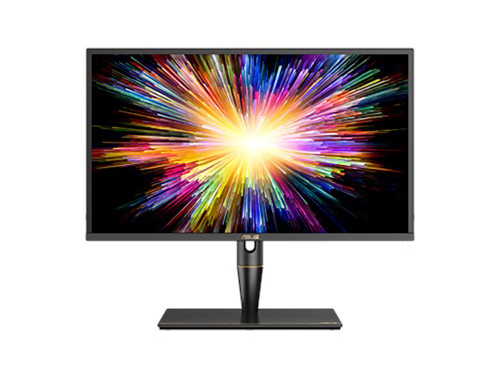
The Asus PA27UCX
Finally, Asus have a little portable 21.6-inch OLED, the PQ22UC. The contrast performance of the OLED display is, as ever, excellent, and it is fast in a way any TFT will often struggle to match. It is a true RGB display – not an RGB display with extra white pixels for extra brightness – and as such overs 99% of DCI-P3. A full 4K display at this size looks effectively like a backlit transparency, although very few backlit transparencies have ever achieved the depthless, inky blacks of an OLED.
The PQ22UC is very much configured as a portable device, with a tablet-style folding stand with micro-HDMI and USB-C connectors, so it might well find use as an add-on for one of Asus’s laptops. Some of them sport a tidy dual-display configuration that puts extra screen space above the keyboard. It’s an excellent use of an area that’s often just a panel of plastic, and might make a lot of sense for various types of media software. Add the PA22UC as a monitor, and that’s a lot more display capability than some people have on their desks.
Tags: Production


Comments